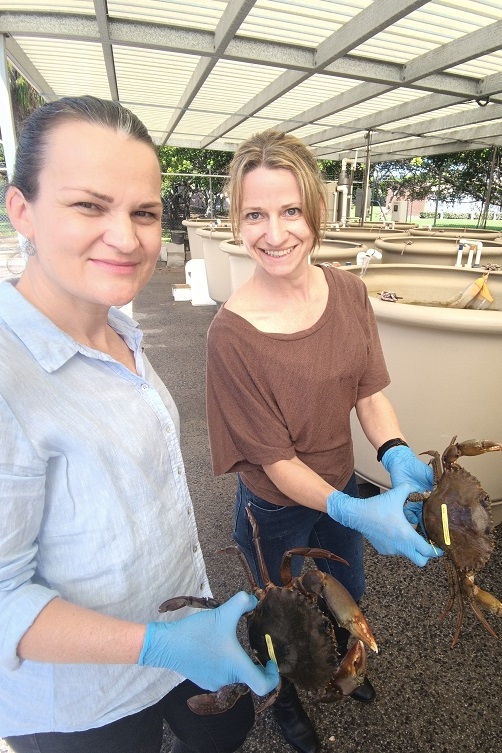Knowledge to Improve the Assessment and Management of Giant Mud Crabs

Description
Researchers from the Department of Agriculture and Fisheries (DAF) Queensland, CQUniversity and the Department of Primary Industries (DPI) NSW Fisheries are collaborating on a Fisheries Research and Development (FRDC) co-funded research project on mud crab populations in Queensland.
Critical to the Harvest Strategy for the Qld Mud Crab Fishery are processes for monitoring and assessing fishery performance. Currently, the empirical and estimated indicators for this fishery are based on non-validated harvest and effort. Proposed fishery reforms (i.e., prior reporting of landings and 'market' tagging of harvested crabs) should improve harvest data reliability.
A Total Allowable Catch (TAC) is a key aspect of reform to Qld fisheries. The initial TACs for Qld GMC was informed by a modified catch-MSY analysis (Northrop et al., 2019). Catch-MSY is widely applied in Australian fisheries to data-limited species (FRDC 2017/102). The assessment was performed at large spatial scales (East Coast and Gulf). However, this fails to capture regional variability in spawning-recruitment processes that impact harvestable biomass e.g., larval dispersal due to oceanic circulation patterns and survival of juvenile crabs due to regional rainfall, flow, temperature, and sea level variations. The proposed research is needed (in the short-term) to gather appropriate quantitative biological information and to develop (for the long-term) a means to cost-effectively monitor Qld GMC populations to support a data-moderate stock assessment approach. The research also aims to address some of the critical knowledge gaps in GMC life history that have been unresolved for over 40 yrs.
Impact
- Assess the utility of next-generation genetic analysis to inform the spatial stock structure of the Giant Mud Crab (Scylla serrata), using South East Queensland and northern New South Wales as a case study.
- Develop and assess the feasibility of ‘survey' pots suitable for long-term implementation as a means of monitoring Giant Mud Crabs.
- Gather key quantitative biological information on Giant Mud Crabs relevant to assessment and management, including tagging studies and a pilot evaluation of means to understand the spawning migration of female Giant Mud Crabs.
Partners
Dr Nicole Flint - Project Lead
Dr Nicole Flint is a Research Fellow in the School of Health, Medical and Applied Sciences and leads CMERC's research in Sustainable Coastal Resources. With postgraduate qualifications in fish biology and economics and previous work experience in fisheries management, she has worked for CQUniversity since 2011. Her research primarily focuses on improving the monitoring, assessment and management of aquatic environments, environmental report cards, and fisheries management. Nicole is also the Postgraduate Research Coordinator for SHMAS, a research member of the CQUniversity Animal Ethics Committee and the Fitzroy Partnership for River Health's Independent Science Panel.

Sustainable Development Goals
At CQUniversity we are committed to embedding sustainable practice in our operations, interactions and relationships, underpinned by the United Nations Sustainable Development Goals. Sustainability is one of our strategic pillars within our Strategic Plan 2019-2023.
This project aligns to the following SDG Goals:
- 4 - Quality education
- 8 - Decent work and economic growth
- 14 - Life below water
- 17 - Partnerships to achieve the Goal
